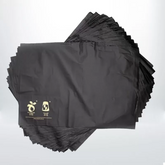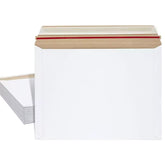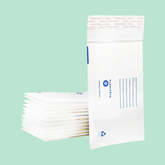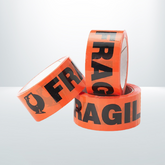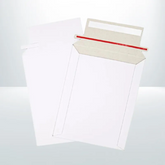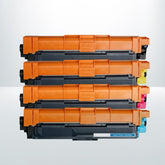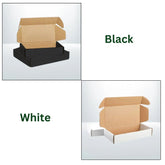Are you looking to ensure safe and secure transit for your pallets? Look no further than this article on pallet wrap essentials.
Discover the importance of proper pallet wrap techniques and the different types of wrap available.
Learn how to avoid common mistakes and maximize efficiency.
With these tips, you’ll be well-equipped to protect your goods during transportation.
Understanding the Importance of Pallet Wrap
Understanding the importance of pallet wrap is crucial for ensuring the safe and secure transit of your goods.
When it comes to shipping and transportation, your products are vulnerable to various risks such as damage, contamination, and theft. Pallet wrap acts as a protective barrier, keeping your goods intact and preventing them from shifting during transit. It provides stability and support to the entire load, minimizing the chances of breakage or loss.
By securely wrapping your pallets, you not only safeguard your products but also streamline the handling process. This reduces the risk of accidents and ensures that your goods arrive at their destination in the same condition as when they were shipped.
Investing in high-quality pallets is a smart choice that can save you both time and money in the long run.
Types of Pallet Wrap and Their Features
To ensure the safe and secure transit of your goods, it’s important to be familiar with the different types of pallet wrap and their features.
There are several options available, each with its own unique characteristics and benefits.
One popular type is stretch film, which is highly flexible and can be stretched to tightly secure items on a pallet. It’s also puncture-resistant and provides excellent load stability.
Another option is shrink film, which shrinks when heat is applied, creating a tight and secure wrap around the pallet. This type of wrap is ideal for protecting goods from moisture and dust.
Additionally, there are specialty films available, such as anti-static wrap for sensitive electronic equipment and vented wrap for products that require airflow.

Proper Techniques for Applying Pallet Wrap
You should apply pallets using proper techniques to ensure safe and secure transit of your goods. Following these techniques will help prevent damage and ensure that your products arrive at their destination in optimal condition.
Firstly, ensure that the pallet is stable and secure. Make sure the goods are properly stacked and evenly distributed on the pallet.
Begin wrapping from the bottom, working your way up to the top, and overlapping each layer by about 50%. Apply tension to the wrap as you go, keeping it tight but not so tight that it damages the goods.
Pay special attention to the corners and edges, as these are vulnerable areas.
Finally, secure the wrap by tucking the end underneath a layer or using a pallet wrap dispenser.
Common Mistakes to Avoid With Pallet Wrap
One common mistake to avoid with pallet wrap isn’t applying enough tension during the wrapping process. Insufficient tension can lead to loose wrapping, causing the load to shift and potentially fall off the pallet during transit. To prevent this, make sure to pull the wrap tightly around the load, ensuring a secure and stable wrapping.
Another mistake to avoid is using too much stretch film. Excessive film can add unnecessary weight to the shipment, increasing shipping costs. It’s important to use the appropriate amount of film to secure the load effectively without wasting material.
Lastly, overlooking the importance of properly securing the bottom of the pallet can also be a costly mistake. Ensure that the wrap is tightly secured under the pallet to prevent the load from sliding or tipping over.
Additional Tips for Maximizing Pallet Wrap Efficiency
Maximize your pallet wrap efficiency by ensuring that each layer of film overlaps the previous one by at least 50%.
This overlapping technique helps to create a strong and secure bond between the layers, preventing any loose or weak spots in the wrap.
When each layer overlaps properly, it distributes the load evenly and reduces the risk of the wrap unraveling during transit.
Additionally, make sure to wrap the pallet tightly and evenly, applying the right amount of tension to keep the load stable.
Avoid excessive stretching, as it can weaken the film and lead to tears or breakage.
Frequently Asked Questions
What Are the Potential Risks and Hazards Associated With Improper Pallet Wrapping?
Improper pallet wrapping poses potential risks and hazards. You might experience load shifting, product damage, and increased chances of accidents.
Secure wrapping is crucial to ensure safe transit.
Are There Any Specific Regulations or Guidelines for Pallet Wrapping in Different Industries?
Are there specific regulations or guidelines for pallet wrapping in different industries?
Yes, there are. It’s important to follow these guidelines to ensure safe and secure transit of your goods.
How Can I Determine the Appropriate Thickness or Gauge of Pallet Wrap for My Specific Needs?
To determine the right thickness or gauge of pallet wrap for your needs, consider the weight and stability of your load. Heavier or more fragile items may require thicker wrap to ensure safe and secure transit.
Is It Necessary to Use Additional Securing Methods, Such as Corner Protectors or Load Stabilizers, in Conjunction With Pallet Wrap?
Yes, it’s necessary to use additional securing methods like corner protectors or load stabilizers along with pallet wrap to ensure safe and secure transit.
They provide extra support and protection for your shipments.
What Are Some Alternative Packaging Options to Consider if Pallet Wrap Is Not Suitable for My Product?
If pallet wrap isn’t suitable for your product, you can consider alternative packaging options.
Some options may include shrink wrap, stretch film, or strapping.
These alternatives can provide the necessary protection during transit.
Conclusion
In conclusion, ensuring safe and secure transit is essential when it comes to pallet wrap. By understanding its importance and using the right type of wrap, along with proper application techniques, you can minimize the risk of damage during transportation.
It’s important to avoid common mistakes and follow additional tips for maximizing pallets efficiency. By doing so, you can ensure that your goods reach their destination in the best possible condition









